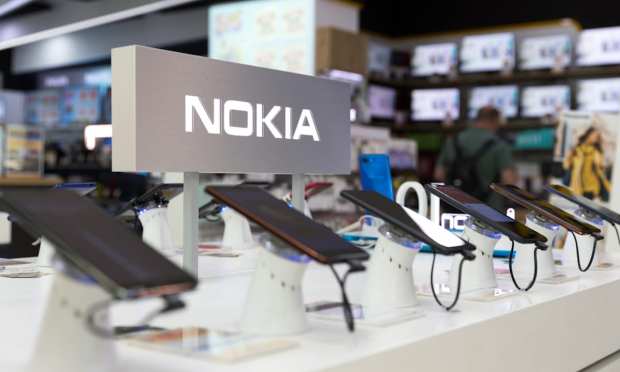Nokia Rides The 5G Tailwind

Wall Street loves earnings surprises. And when a firm raises its guidance on the tailwinds of strong fundamentals, tied to a sanguine outlook into the end of the year and beyond, stocks react positively.
So it is the case with Nokia, the telecom equipment maker, which saw its stock soar roughly 10 percent in intraday trading after the company said its strong results in the second quarter spurred it to raise its full-year guidance, in an improved outlook that will be unveiled on July 29.
As noted by Yahoo! Finance, the company has been focusing on cost control, but there are also a number of larger macro themes that could be at play when the boosted guidance is unveiled at the end of the month. In reference to a benchmark, the firm had earlier guided to a range of $24.4 billion to $25.9 billion USD equivalent.
Among the macro trends that would underpin top-line growth: Nokia may grab more 5G-related sales in China later in 2021.
More Details To Come
We’ll get more detail when the company releases results for the June quarter, but the signals have been there for a while that 5G is gaining traction.
As noted in this space earlier in the year, Nokia has been working globally to deploy its 5G solutions. Independent analysts at PA Consulting recently determined the company to have the most essential 5G patents of any operator.
“This year, we are seeing great demand in 5G, and also in what we call network infrastructure, which is basically fiber connections to homes and offices,” Nokia Chief Executive Pekka Lundmark told Reuters in the spring.
The demand for 5G-related services is evident along other avenues, too – where the equipment is being rolled out, the new use cases follow. Verizon and Mastercard are working together to innovate on payments, including contactless shopping and autonomous checkout technology to cloud-based point-of-sale (POS) systems.
As noted by Karen Webster in a recent column: The connected economy gives us a continuum of seamless services that in turn needs the infrastructure, high-speed data and connectivity to keep it all flowing. PYMNTS found that as many consumers used connected devices to track their personal health data (67 percent) as they did to book a trip online (75 percent). Nearly three-quarters of the population (72 percent) streamed music over the last year, and 16 percent did so every day.
The great digital shift demands the device, so to speak: During the pandemic, four in 10 consumers went online to buy grocery products. That tally has grown. In just one example, 17 percent of consumers are shifting digital for groceries, doing more of their grocery shopping online than in the physical store. Forty-four percent of consumers used mobile wallets to receive money from family, friends or employers.
